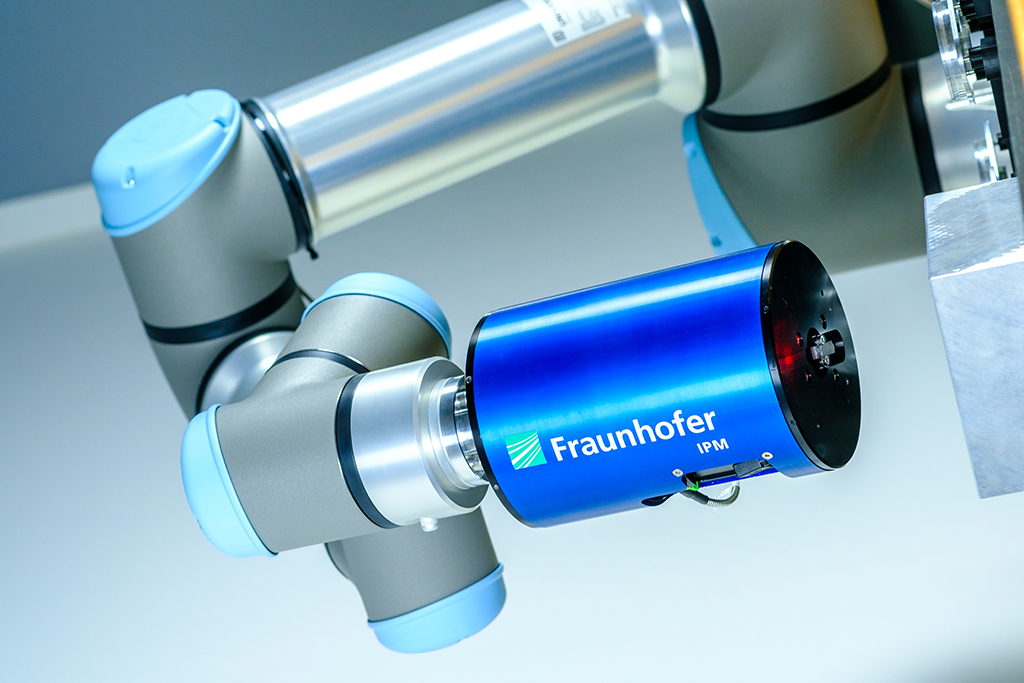100 percent control: fast and contactless
There has been an ongoing trend towards 100 percent control in production for many years. In many cases, however, complete control is only cost-effective if it is fully automated and if faulty components are identified as early on in the value chain as possible.
This is where sensor technology based on optical imaging processes has decisive advantages over tactile measurement technology, which is normally carried out in measurement and testing laboratories. Optical sensors affixed to robotic arms are able to check each specimen quickly and contactless – irrespective of whether the sensor or the specimen is moving.
The decisive factor: perfect interaction between sensor and handling systems
The performance of an inline measurement and control system essentially depends on the interaction between the sensor and the handling systems.
In recent years, collaborating robotic systems have started making an entrance in production. The benefits are obvious: The systems move relatively slowly or even stop upon contact, which means they can be operated without the need for a safety fence. The maximum loads of these systems and their stability are limited, however, and this creates new challenges.
The design of modern sensor heads must be more compact, i.e. smaller and lighter. The power supply for lighting, cameras, data interfaces and any actuator components inside the sensors have to be able to cope with as few drag chain-compatible cables as possible. Ideally, batteries and radio transmission can do away with the need for cables all together – much as is already the case today, for example, in machining centers.
Great demand for intelligent control and evaluation strategies
Measuring precisely despite the undesirable oscillations of such collaborating robotic arms is an often overlooked challenge. Fraunhofer IPM is working on the refinement of measuring techniques to make the measured data unaffected by the inherent movements of the handling system – regardless of whether the sensor or the test specimen is being moved.
This is achieved with the help of intelligent control and evaluation strategies, which recognize disturbances and filter them out of the data set, or proactively counteract these movements. This does not necessarily require the robotic arm, which weighs several kilos, to be corrected in its position. Looking at the sensor itself is often easier and more elegant. If, for example, the extent of the movement of the robotic arm from one interferometric measurement to the next is known, compensating the distance within the interferometer is child’s play. This is simply done by moving a small mirror which weighs only a few grams.
Fraunhofer IPM does not develop its own handling systems. This is why to perfect the interaction between state-of-the-art sensor technology and handling, we are always developing innovative approaches and products, and are always on the lookout for new partners. Among other things, we rely on the establishment of modern, standardized interfaces, such as OPC-UA.
